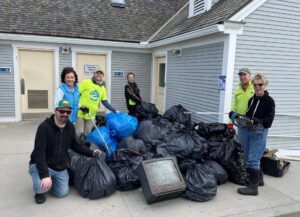 HYANNIS – For years, crib bumper pads were not only considered a nursery fashion accessory, but also a safe way to prevent babies from bumping their heads or getting limbs trapped between the slats of the crib. These days, they are no longer considered safe, and researchers in a recent study published in theJournal of Pediatrics have recommended that the U.S. Consumer Product Safety Commission ban crib bumpers altogether. They currently just recommend against pillow-like bumpers.
HYANNIS – For years, crib bumper pads were not only considered a nursery fashion accessory, but also a safe way to prevent babies from bumping their heads or getting limbs trapped between the slats of the crib. These days, they are no longer considered safe, and researchers in a recent study published in theJournal of Pediatrics have recommended that the U.S. Consumer Product Safety Commission ban crib bumpers altogether. They currently just recommend against pillow-like bumpers.
The researchers identified 48 suffocation deaths related to crib bumpers between 1985 and 2012. Two-thirds of the deaths were directly attributed to bumper pads and the remaining third were caused when the baby became wedged between the bumper and another object. Ninety percent of the deaths occurred in babies seven months or younger.
“Bumper pads have actually been out of fashion for probably about 10 years,” said pediatrician Alexander Heard, MD, at Cape Cod Pediatrics in Forestdale. “The theory being that kids can use them as a step to get out of their crib or to get suffocated. With that in mind, we have not been recommending bumpers for a long time.”
The good news on the subject of infant sleeping is that deaths from Sudden Infant Death Syndrome have decreased dramatically in recent years. The“Back-to-Sleep” campaign that began in 1992 when the American Academy of Pediatrics recommended that babies sleep on their backs, unencumbered by soft blankets or bedding, is given a lot of the credit for the decrease.
“When they originally looked at the Back to Sleep campaign, they saw a decrease in SIDS of 50 percent,” Dr. Heard said. “I think the declines in teen pregnancy and improved prenatal care have helped. We’ve also done a large reduction in early elective deliveries. We’re keeping kids inside their mothers a lot longer. I don’t know the pure causality of that with SIDS but we’re getting more healthy delivered babies.”
One tool modern mothers use to ensure that their babies stay on their backs is the swaddling blanket that wraps an infant up like a little burrito. It has long been known that swaddling is an effective way to calm a baby especially in the first few months, but some mothers have continued swaddling long after the first few months, creating a backlash against the practice.
In 2011 the National Resource Center on Child Health and Safety, a Colorado-based organization that provides health and safety guidelines for childcare centers recommended against swaddling. Since then the practice has been banned in child care centers in Minnesota and strongly discouraged in centers in Pennsylvania and California.
There’s so much conflicting information on the Internet that it’s hard for new parents to know which advice to follow.
“When we were growing up, we had Dr. Sears and Dr. Spock. We only had two options and they agreed on almost everything,” Dr. Heard said. “These days there are 20 different options to take care of each issue and what that really says is that there is not really crystal clear data one way or another about any of these topics.
“A lot of it is up to the family’s belief system and the approach they want to take. What I tell parents is that moderation is usually the key to everything. If your kid is swaddled 23 out of 24 hours a day, that’s not a good idea. If they’re swaddled to sooth them to get them to sleep and they enjoy it and are not fighting against it, then it’s probably okay.”
























Speak Your Mind